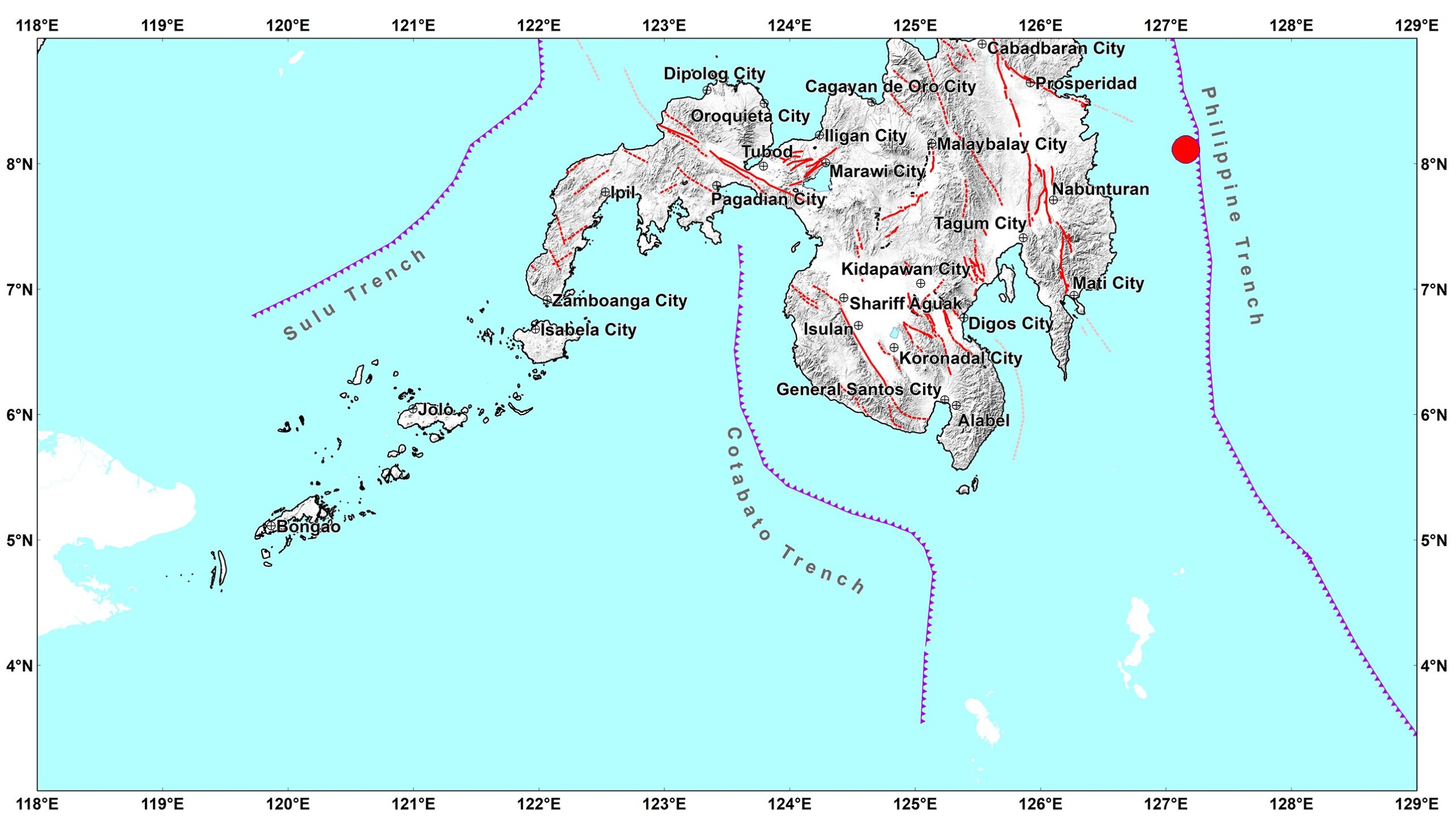
MANILA, Philippines — The Philippine Institute of Volcanology and Seismology (Phivolcs) on Saturday recorded more than 200 aftershocks after a magnitude 6.8 earthquake struck the shores off Lingig town in Surigao del Sur.
Of the total 217 aftershocks, the strongest was felt at around noon with a magnitude of 6.2, according to Phivolcs.
The epicenter of the offshore quake was located 85 kilometers east of Lingig at 6:22 a.m.
READ: Earthquake of 4.6 magnitude hits Surigao del Sur town – Phivolcs
Phivolcs said the tremor was tectonic in nature, meaning it was triggered by “sudden movement along faults and plate boundaries.”
A report from Agence France-Presse said the nearest village in Tingig that felt the shallow quake was Barangay Barcelona, which is just about 20 km from the epicenter. Residents were sleeping when the strong shaking jolted them from their beds.
A local disaster officer Ian Onsing said he was awaken by the shaking.
“The shaking was quite strong. The things around here were moving. I guess, the shaking took around 10 to 15 seconds,” Onsing told AFP by telephone.
“So far, there are no reported casualties or damage. We are now monitoring the shores for any rough movement,” Onsing added.
In the municipality of Hinatuan, about 25 km north of Barcelona, local disaster officer Jerome Ramirez saw appliances “moving for around 30 seconds” from the strong shaking.
Ramirez said there were no reports of injuries or damage in coastal communities in the area.
“Now we are just monitoring for possible aftershocks,” Ramirez told AFP by telephone.
Strong to moderately strong
An intensity level V, which Phivolcs defines as “strong” level of shaking, was logged in six areas; Lingig, Hinatuan and Bislig City in Surigao del Sur, Rosario in Agusan del Sur, Maco, and Monkayo in Davao de Oro.
Intensity IV, or “moderately strong,” was felt in Davao City and Nabunturan town in Davao de Oro.
Weaker intensities, ranging from “slightly felt to weak,” were posted in Don Marcelino, Davao Occidental; Inabanga, Bohol; Baybay City, Leyte; Mambajao, Camiguin; Sogod in Southern Leyte; Cotabato City and Datu Sinsuat in Maguindanao.
Earthquakes regularly strike the Philippines, which sits along the Pacific Ring of Fire, an arc of intense seismic and volcanic activity that stretches from Japan through Southeast Asia and across the Pacific basin.
Most are too weak to be felt by humans but strong and destructive quakes come at random with no technology available to predict when and where they will happen.
In December, a magnitude 7.6 quake struck off Mindanao, briefly triggering a tsunami warning.
That sent residents along the east coast of the island fleeing buildings, evacuating a hospital and seeking higher ground. At least three people died. —with a report from Agence France-Presse

